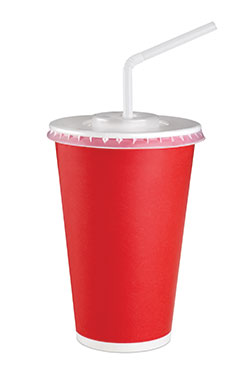Beverage programs have become a point of distinction for a growing number of restaurants and retail foodservice programs.
 The volume of carbonated beverages the operator wishes to offer will dictate the size of the equipment. A variety of foodservice operators use self- and full-service cold carbonated-beverage dispensers to provide soft drinks and carbonated flavored water. Flavor shots are a popular option that provides users with the ability to customize their drinks with different infusions.
The volume of carbonated beverages the operator wishes to offer will dictate the size of the equipment. A variety of foodservice operators use self- and full-service cold carbonated-beverage dispensers to provide soft drinks and carbonated flavored water. Flavor shots are a popular option that provides users with the ability to customize their drinks with different infusions.
With fountain dispensers, mixing of the syrup and water occurs at the point of dispensing. Carbonated water and flavored syrup combine at the proper ratio in the upper portion of the unit. The adjustable dispenser valves provide different beverage ratios at the point of dispensing, such as 5-to-1 and 6-to-1.
The amount of carbonated beverages the operator wishes to offer will dictate the size of the equipment. Countertop ice/beverage units measuring 22 to 24 inches wide typically provide 6 valves. The most common type used for self-service in both quick- and full-serve applications is a 30-inch-wide unit, which accommodates between 8 and 10 valves. Large-format dispensers, which measure 42 to 44 inches wide and provide space for 12 brands, are most often used in convenience stores and for other retail applications. For high-volume use, there also are 60-inch-wide beverage dispensers that have 20 valves.
While most beverage dispensers are countertop units, drop-in models that fit into a countertop or stand also are available.
The design of most dispensers allows these units to store and dispense ice as well as provide cold beverages. These beverages should be kept between 36 degrees F and 38 degrees F.
Carbonated-beverage dispensers utilize either mechanical or ice-cooled refrigeration methods. Used predominantly in foodservice, ice-cooled dispensers employ a cold plate to chill product. These units, which utilize ice as a cooling agent for water and syrup lines, have an unlimited capacity. Mechanical units’ refrigeration system type determines how much volume can be accommodated. Operators need to allow enough room not only for the actual equipment but also to store the bag and box syrup.
One newer innovation is flavor shots, which provide consumers with the ability to customize their soft drinks. Foodservice operators need to decide how many flavors they want to offer. Staple varieties include cherry, vanilla and lemon-lime. Beverage dispensers are available with up to 8 different multi-flavor valves for operations looking to diversify drink offerings. Multi-flavor valves provide up to 16 soft drink varieties in 30 inches of space and utilize 4 dispense points.
 A common mistake operators make is underestimating the amount of ice necessary for beverage dispensing. When determining how much ice an operation requires, be aware that as much as 30 percent to 35 percent of ice will be used to cool water and syrup with ice-cooled refrigeration dispenser units. This means that, for a 250-pound bin, as much as 87½ pounds of ice will not be available for use in dispensed beverages. It’s cheaper and easier to store ice rather than produce it. It’s also important to note that chewable ice requires a different setup than cubed ice in terms of adaptors and dispensing adjustments.
A common mistake operators make is underestimating the amount of ice necessary for beverage dispensing. When determining how much ice an operation requires, be aware that as much as 30 percent to 35 percent of ice will be used to cool water and syrup with ice-cooled refrigeration dispenser units. This means that, for a 250-pound bin, as much as 87½ pounds of ice will not be available for use in dispensed beverages. It’s cheaper and easier to store ice rather than produce it. It’s also important to note that chewable ice requires a different setup than cubed ice in terms of adaptors and dispensing adjustments.
Back-of-house beverage dispensers typically utilize ice bins adjacent to the units that have capacities between 60 and 100 pounds. Self-service dispensers include top-mount ice makers that feed ice directly into a bin, which can save labor.
A number of innovations in beverage dispensing deal with digital volumetric and flowmeter technology as well as touch-screen technology.



